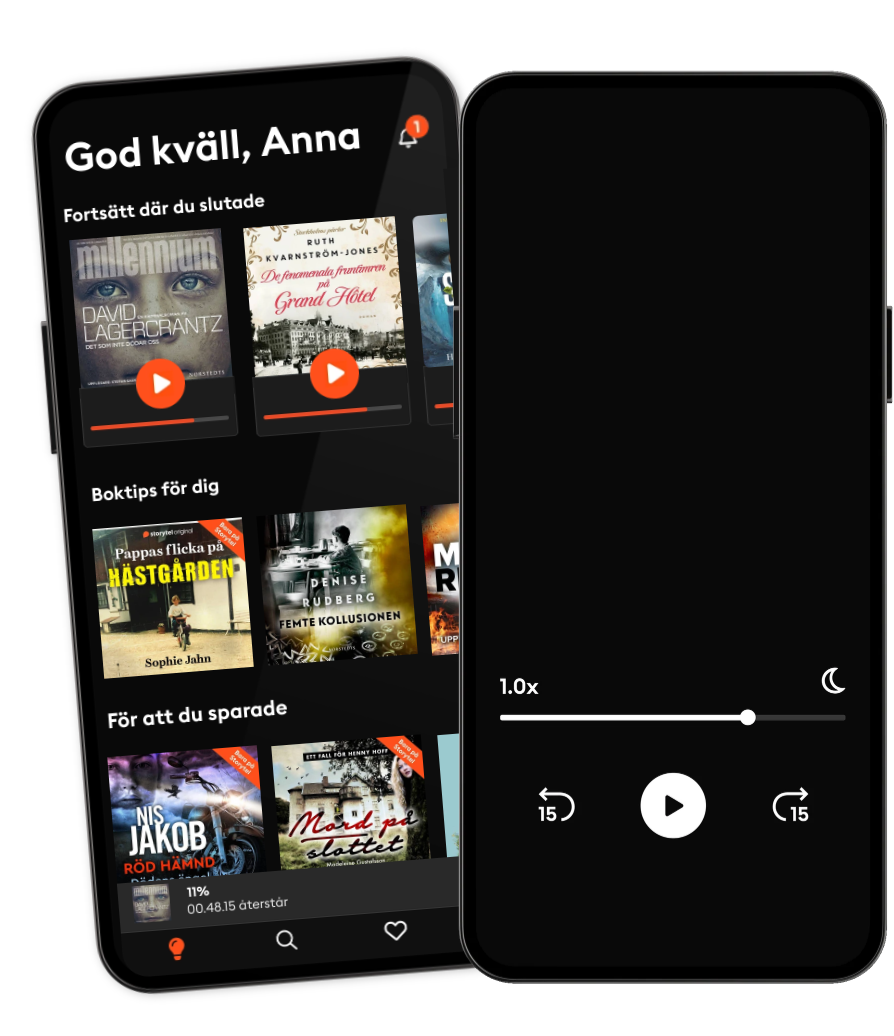Lyssna för 9 kronor i 1 månad. Tidsbegränsat erbjudande.
Starta erbjudandetLyssna när som helst, var som helst
Kliv in i en oändlig värld av stories
- 1 miljon stories
- Hundratals nya stories varje vecka
- Få tillgång till exklusivt innehåll
- Avsluta när du vill
Griselda Pollock on Alina Szapocznikow
- Av
- Med
- Förlag
- Längd
- 55min
- Språk
- Engelska
- Format
- Kategori
Fakta
In episode 50 (!!!) of The Great Women Artists Podcast, Katy Hessel interviews the legendary, trailblazing, feminist art history ICON, GRISELDA POLLOCK on the pioneering Polish Jewish artist, Alina Szapocznikow.
[This episode is brought to you by Alighieri jewellery: www.alighieri.co.uk | use the code TGWA at checkout for 10% off!]
Author, editor, curator, and Professor, Griselda Pollock's 43-year-plus career as an art historian is nothing short of LEGENDARY. Having co-authored (with Rozsika Parker), “Old Mistresses: Women, Art and Ideology”, written 26 books, and edited many more, Pollock's indefatigable career has seen her spend decades developing an international, queer, postcolonial, feminist analysis of art’s diverse histories.
Writing extensively on artists Eva Hesse, Lubaina Himid, Georgia O’Keeffe, to Tracey Emin, Pollock has curated numerous museum exhibitions, made several films, and has two forthcoming publications out for release.
But the reason why we are speaking to Griselda today is because as well as being a social and feminist historian of 19th and 20th century and contemporary art she is also a transdisciplinary cultural analyst focussing in Cultural Studies and Jewish studies, which is where her fantastic, tireless work on the great sculptor, Alina Szapocznikow comes into play.
Born in Poland to an intellectual Jewish family of doctors in 1926, Alina Szapocznikow survived internment in concentration camps during the Holocaust as a teenager. [TW: we discuss The Holocaust]. At her liberation in 1945, she moved first to Prague, and then to Paris, where she studied sculpture and took up a job at a stonemasons, and then was forced back to Poland in 1951 after suffering from tuberculosis. When the Polish government loosened controls over creative freedom following Stalin’s death in 1952, Szapocznikow moved into figurative abstraction and then a pioneering form of representation. By the 1960s, she was radically re-conceptualizing sculpture as an intimate record not only of her memory, but also of her own body.
First casting parts of the body as fragments, on her return to Paris as part of 'Nouveau Realisme', she began to move into casting bulbous shapes cast in resin from human bellies, lipstick red lips, nipples and lips growing from slender stems like flowers and serving as lamps.
Surrounded by an artistic community that included Niki de Saint Phalle and more, in this episode we discuss Szapocznikow's incredible life and career, her involvement in the evolution of new materials and new ways of thinking, whilst simultaneously trying to deal with the horrors of the past – as with her American contemporaries, Eva Hesse, Louise Bourgeois, and Hannah Wilke.
AS's Self Portrait: https://hammer.ucla.edu/exhibitions/2012/alina-szapocznikow-sculpture-undone-1955-1972 Photosculptures (chewing gum): https://hammer.ucla.edu/exhibitions/2012/alina-szapocznikow-sculpture-undone-1955-1972 Lamp works: https://hammer.ucla.edu/exhibitions/2012/alina-szapocznikow-sculpture-undone-1955-1972 Tumour series: https://hammer.ucla.edu/exhibitions/2012/alina-szapocznikow-sculpture-undone-1955-1972 Further images and information: https://www.hauserwirth.com/artists/16711-alina-szapocznikow?modal=media-player&mediaType=artwork&mediaId=16719
Follow us: Katy Hessel: @thegreatwomenartists / @katy.hessel Sound editing by Laura Hendry Artwork by @thisisaliceskinner Music by Ben Wetherfield
https://www.thegreatwomenartists.com/
Utgivningsdatum
Ljudbok: 25 november 2020
Taggar
- Långfredagen Sofie Sarenbrant
3.8
- Den sista utposten Mari Jungstedt
4.1
- Rök utan eld Dan Buthler
4
- Post mortem Ann-Charlotte Persson
3.9
- Han ägde mig: En sann berättelse om att överleva en mans våld Leone Milton
4.1
- Syskonfejden Moa Herngren
4.1
- De fenomenala fruntimren på Grand Hôtel Ruth Kvarnström-Jones
4.5
- Födelsedagen Sofie Sarenbrant
3.7
- Drömmar av brons Camilla Läckberg
3.8
- Det åttonde namnet Andrew Child
3.7
- Frälsarkransen Kristina Ohlsson
4.2
- Kodnamn Ares Mikael Ressem
4.2
- Hämnden Leffe Grimwalker
4.4
- Det slutar med oss Colleen Hoover
4.2
- Draken Dag Öhrlund
4.1
Svenska
Sverige
